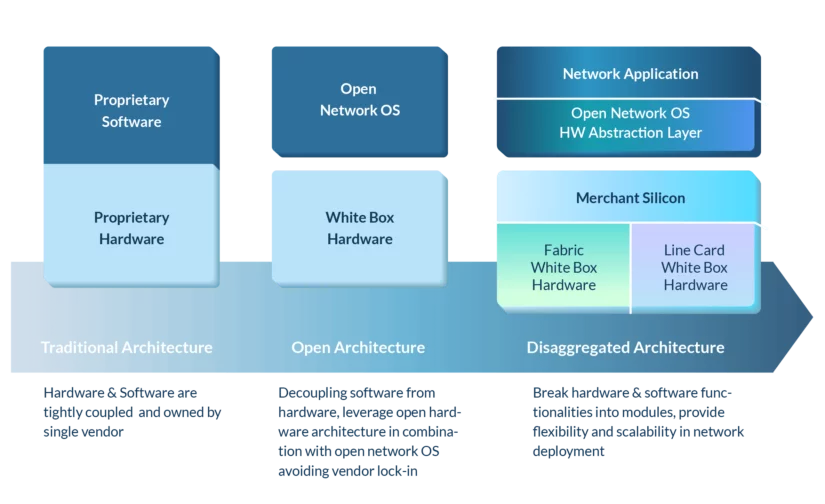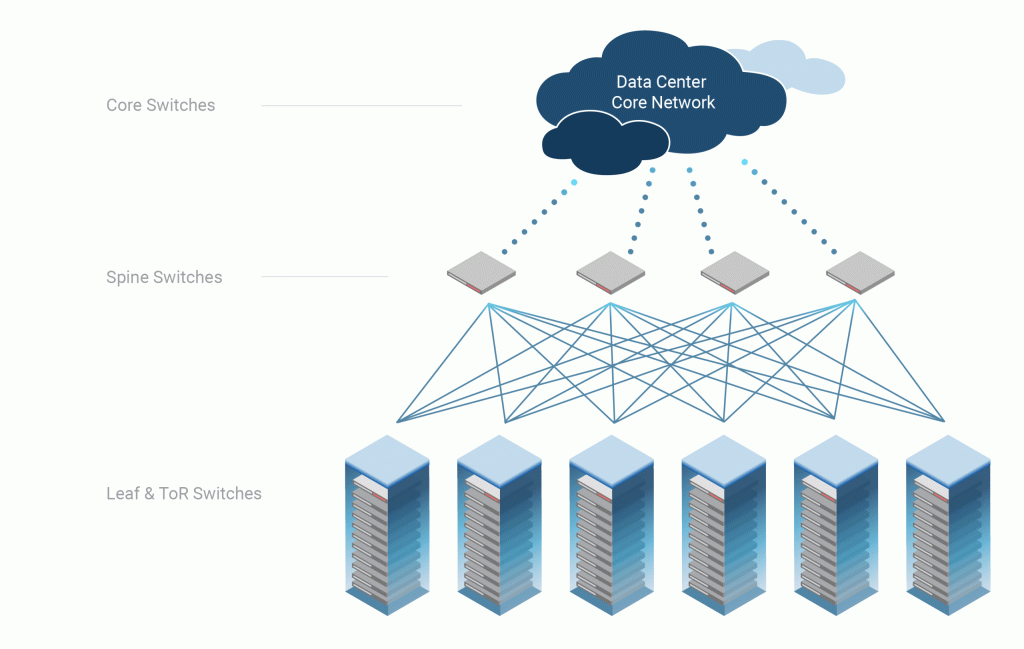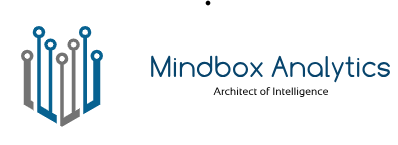The Trend of Network Traffic
Similar to the famous Moore’s Law, there is also an observation on the network traffic saying that bandwidth and data rates double every 18 months. In the late 1900s when the internet was first opened to the public, no one was able to foresee the evolution of the network today, in which data traffic grew more than 100,000 times and how tight our lives would be bound to internet services.
Here comes the 5G era, and it will give you more than you can imagine. With the booming of network services, people watch live streaming videos in 4K quality, enjoy AR/VR applications in real-time, and not only people but machines will also connect to the network, which leads to enormous applications such as autonomous driving, manufacturing automation, smart city and more. The internet of everything is for real and the traffic load of the data center will be massive.
Mindbox provides a complete portfolio for different applications in the data center to fulfill the exponential data traffic growth.

Network Topology Evolution
As a result of network function visualization and software-defined networking, the data center handles more traffic inside than outward and east-west traffic accounts for more than 70% data volume of a data center. Traditional 3-tier network architecture was designed to handle north-south traffic and faces lots of challenges in today’s traffic pattern such as unpredictable latency, lack of scalability, and low network utilization.
Spine and leaf architecture based on the CLOS model introduces the concept of full-mesh network topology for the data center to address those issues. The topology contains two layers, spine and leaf. The spine layer is the network backbone and all the switches in the spine layer connect to every switch in the leaf layer. The leaf layer is built with switches that connect to servers.
With the full mesh topology, the traffic travels between 2 server nodes have the same and predictable delay. The routing path is dynamically selected and guarantees the best path to be used according to the condition of the network to optimize network utilization and efficiency. When the traffic load is full, simply add an extra leaf or spine node to extend the downlink or uplink capacity.
By leveraging open architecture, Mindbox’s products can be easily integrated with all the major Network Operating Systems (NOS) and automation tools and are the best choice to build any scale of the data center. From local data centers to web-scale data centers, Mindbox provides top-of-the-line products to enable reliable and high-performance spine and leaf network architecture.

Traditionally the pace of new technology adoption was controlled by chassis vendors and the solution came bundled with hardware and software. End users barely have the choice to get what fits their requirement best and it is not easy to integrate an alternative solution into the existing network system. The scalability is also limited by the chassis itself, the maximum capacity is decided at the time you bought the chassis, to upgrade the only choice is to buy a bigger chassis.
Now, disaggregation is becoming a new norm. In the first step, the industry introduced the concept of open architecture, by opening the hardware specification, ODM and OEM can build standard hardware platforms, and software company can build their software on the hardware platform. The development now is driven by the market and end-users have the freedom to select from different suppliers to optimize the data center resources. One step further, both hardware and software could be broken down into different modules, allow end-users to gain more flexibility on the system configuration. Distributed Disaggregated Chassis (DDC) is the upcoming approach to realize hardware disaggregation, use line card switches coupled with fabric switches to build a switch system to break the limitation of chassis size and functionalities.
Features and Benefits:
- Complete portfolio for different applications in the data center
- Compliant with open standard helps to reduce CAPEX and avoid vendor lock-in
- Compatible with major NOS vendors
- Compatible with automation and orchestration software
- The redundant design ensures the availability of network service
- Reliable, high performance and low latency features enable network optimization
- Extensive transition technologies for IPv4, IPv6, and dual-stack management functions

Switch Architecture Transformation
Traditional chassis solutions can no longer fulfill market demand. The proprietary system’s software and hardware came from a single vendor, although it guarantees the software and hardware compatibility the vendor lock-in leads to more drawbacks than benefits.
Mindbox’s Distributed Disaggregated Chassis solutions are the best fit for highly scalable and reliable Spine&Leaf architecture that enables the data center to provide flexible and reliable service, scale-out on demand while still minimizing CAPEX and OPEX.
Features and Benefits:
- Disaggregated configuration breaks the port number limitation
- Pay as you growth architecture minimize the initial investment
- Compliant with open standard helps to reduce CAPEX and avoid vendor lock-in
- Compatible with major NOS vendors
- Compatible with automation and orchestration software
- The redundant design ensures the availability of network service



